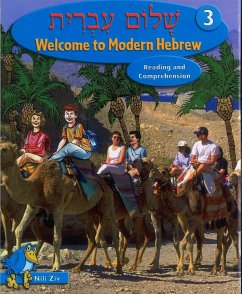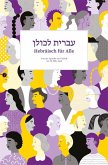Shalom Ivrit 3, the final book in the Shalom Ivrit series, brings to life stories of spirited young teens at home, at camp, with friends, and in Israel. The new vocabulary, including mah'sheiv (computer), s'deih-teufah (airport), pitzah (pizza) and mahaneh (camp), reflects the interests and experiences of teens. Students have fun and learn about Israel as their ability to read and understand Hebrew continues to grow. With 190 new words, students’ ability to conduct simple conversations in Hebrew, using both the present and past tenses, steadily increases as they progress through the book. Features and benefits: * High-interest, age-appropriate stories motivate students to improve their reading fluency and comprehension. * The interdisciplinary approach of teaching about Israel in Hebrew provides students with an enriched, dynamic learning experience. * Vocabulary boxes (milonim) introduce new vocabulary and a cumulative list of all new vocabulary appears in the back of the book as a resource for students. * Comprehension activities—including true and false, word picture matches, cloze technique (sentence completion), and puzzles—provide students with the practice they need to build and strengthen skills. * More than 120 age-appropriate, full-color illustrations and photographs enliven the text and cue students for textual meaning. * Basic grammar—including present tense and past tense verb endings, and root letters—is presented sequentially and clearly, increasing familiarity with Hebrew word structure and syntax.








